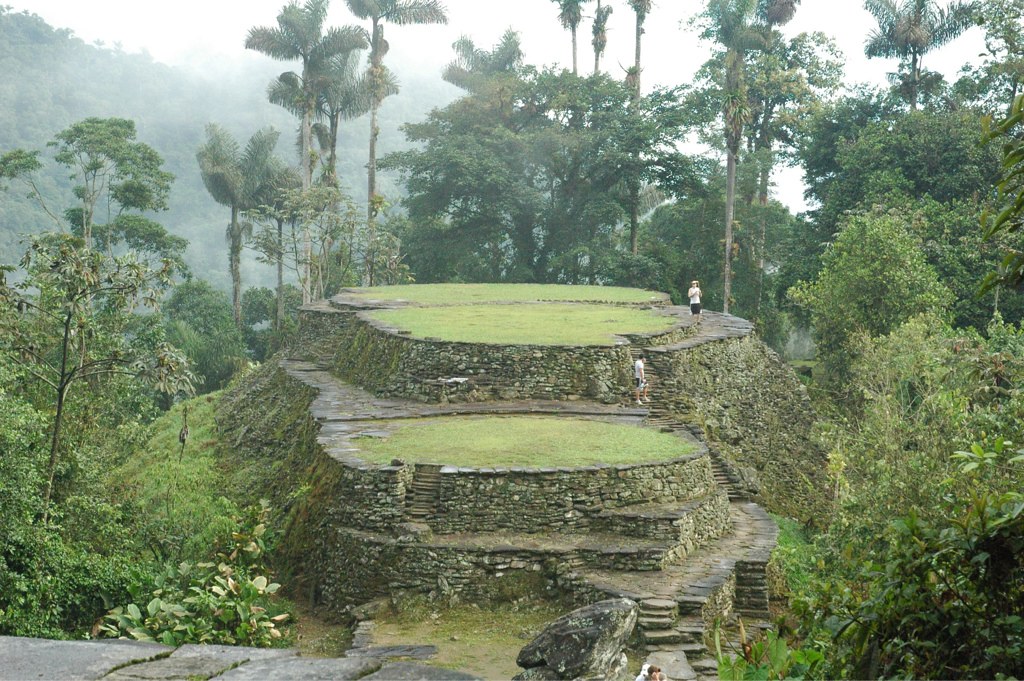COMMENTS ON THE TREK: The Sierra Nevada de Santa Marta is a pyramid shaped mountain range separate from the Andes. They extend over 16,500 square kilometers and are one of the most biodiverse places on the planet. For example, there are more than 650 species of birds living in the Sierra Nevada.
Ciudad Perdida is the ancient Tayrona archaeological site deep in the jungles of the Sierra Nevada de Santa Marta mountain range. The site was discovered by looters in the early 1970's and was finally managed and preserved by ICANH (Instituto Colombiano de Antropologia et Historia) since 1976. Today, the Colombian Military maintains a presence on the site.
To get to Ciudad Perdida, we hiked up and down the steep valleys crossing the Buritaca River several times. It is a three day trek to the site and two days out, although politicians have been known to come in by helicopter. The number of visitors permitted is limited to 100 per day and other than coming in by copter, the trek itself helps to keep the numbers down. The park negotiates with the Kogi tribe to establish a fee and agree to how many people can come through their villages. I hope the Colombian Government together with the determination of the Kogi who believe they are responsible for taking care of the land, that they will preserve the site and not destroy the rainforest in attempts to make Ciudad Perdida more accessible.
The tour company has everything well organized and provide clean albeit rustic accommodations, hot meals and plenty of fruit and purified water. The cost for the five day trip including transportation to the start of the trail was about $330 Canadian each. they advertise that anyone can do it, but I would say you have to be in reasonably good shape and fairly agile as the trail is sometimes quite steep, with narrow ledges and is want to keep your feet dry you have to jump from stone to stone on some of the river crossings.
One of the highlights of the trek for me was the opportunity to see the Kogi and how they live. They are soft spoken and respectful of each other and of nature. They need very little and don't use anything mechanical. They live off the land but do keep some pigs, chickens and cows. They have plantations of bananas and yucca. They share what they have with other families living at different elevations. I have done some research on the internet on the Kogi and there is surprisingly little information available. And what is available is sometimes contradictory. Even though they would stop by our camps, they didn't interact with the hikers, only with the guides. And even then, it was just a greeting and sharing a few moments together.

No comments:
Post a Comment